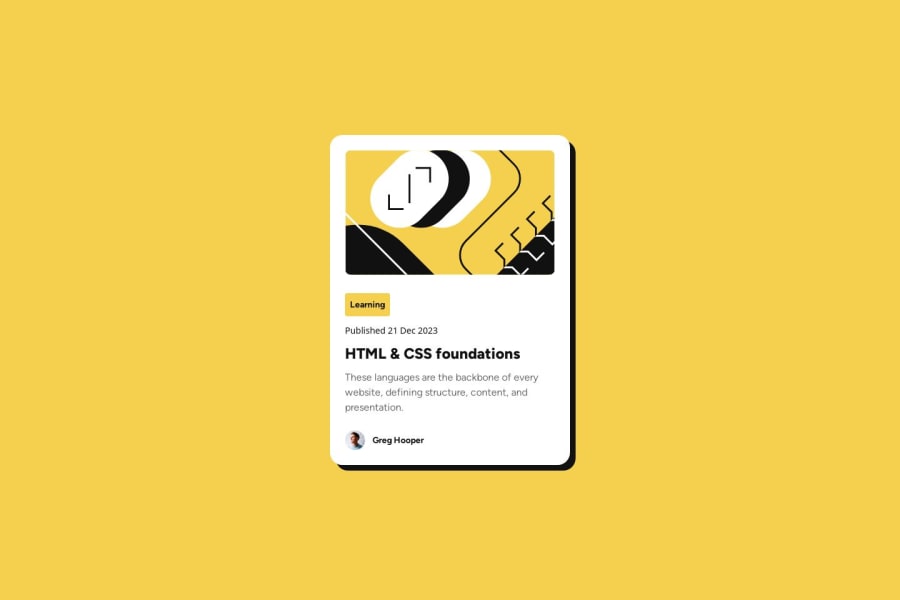
Design comparison
SolutionDesign
Solution retrospective
What are you most proud of, and what would you do differently next time?
Was able to create this solution relatively quickly in ~1 hour so am proud of the progress that I have made in HTML/CSS.
What challenges did you encounter, and how did you overcome them?Some of the fonts in the Figma file did not match 100% with my solution despite using the correct fonts. Wasn't sure what I was doing incorrectly?
What specific areas of your project would you like help with?Looking at HTML to make sure it is semantic and looking at CSS code to ensure it follows best practices.
Community feedback
Please log in to post a comment
Log in with GitHubJoin our Discord community
Join thousands of Frontend Mentor community members taking the challenges, sharing resources, helping each other, and chatting about all things front-end!
Join our Discord
